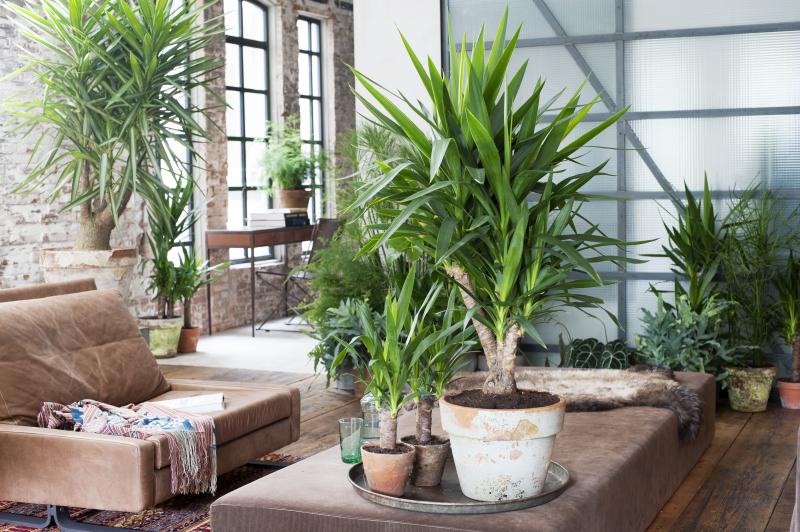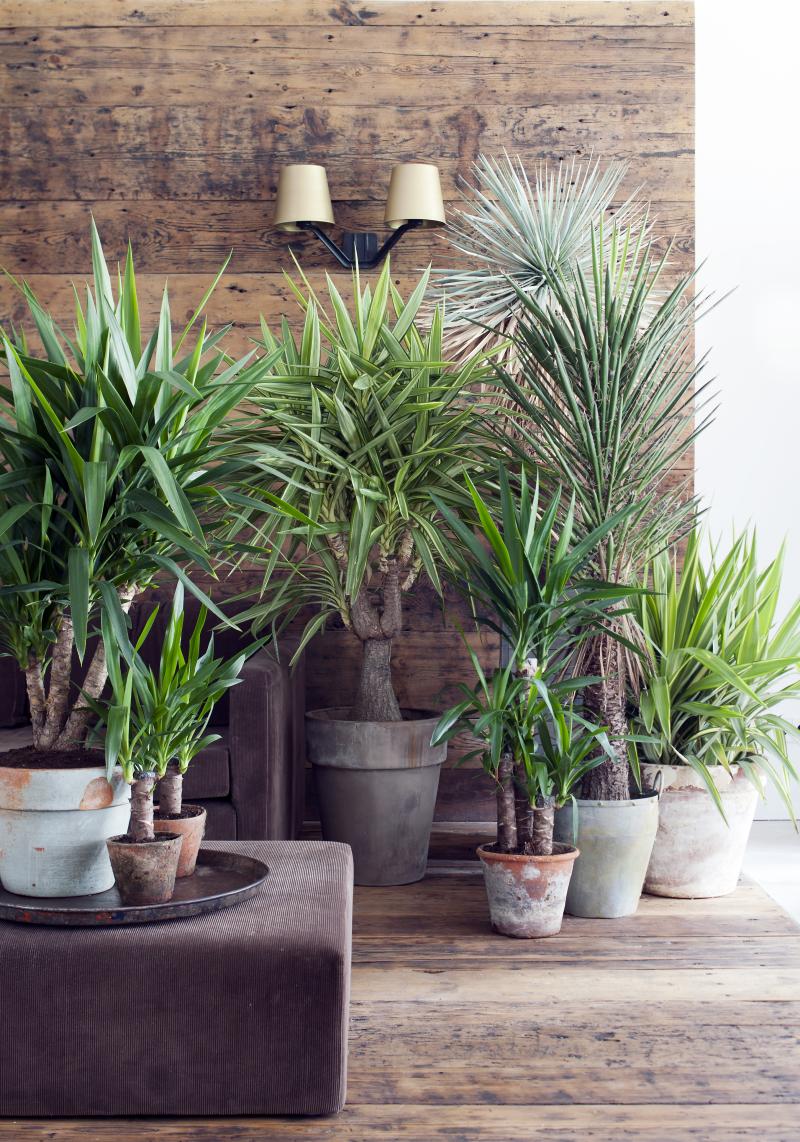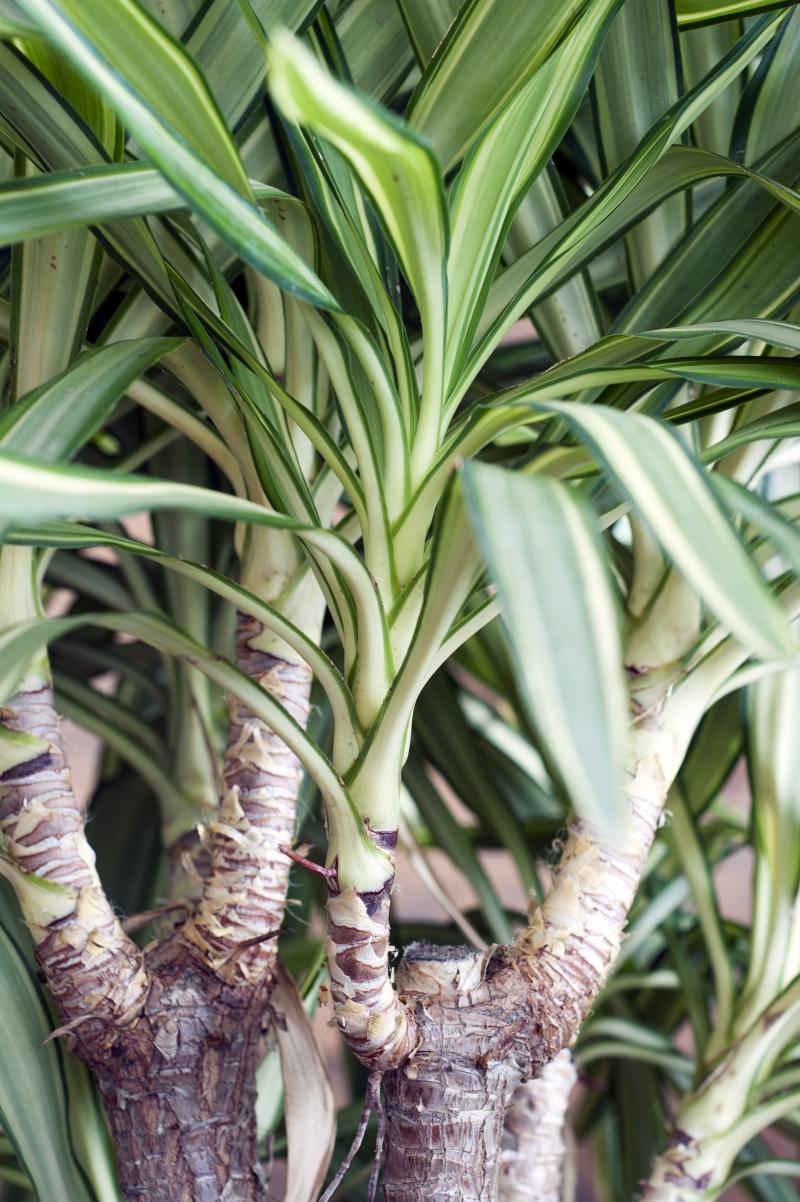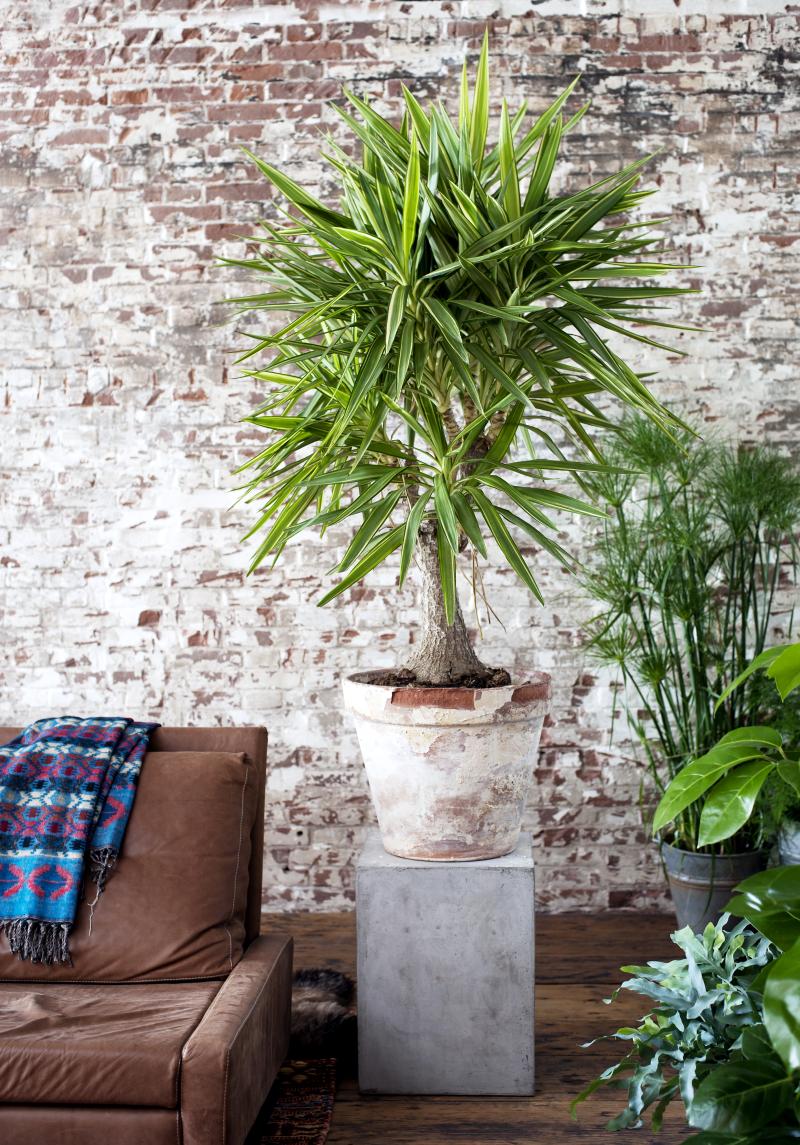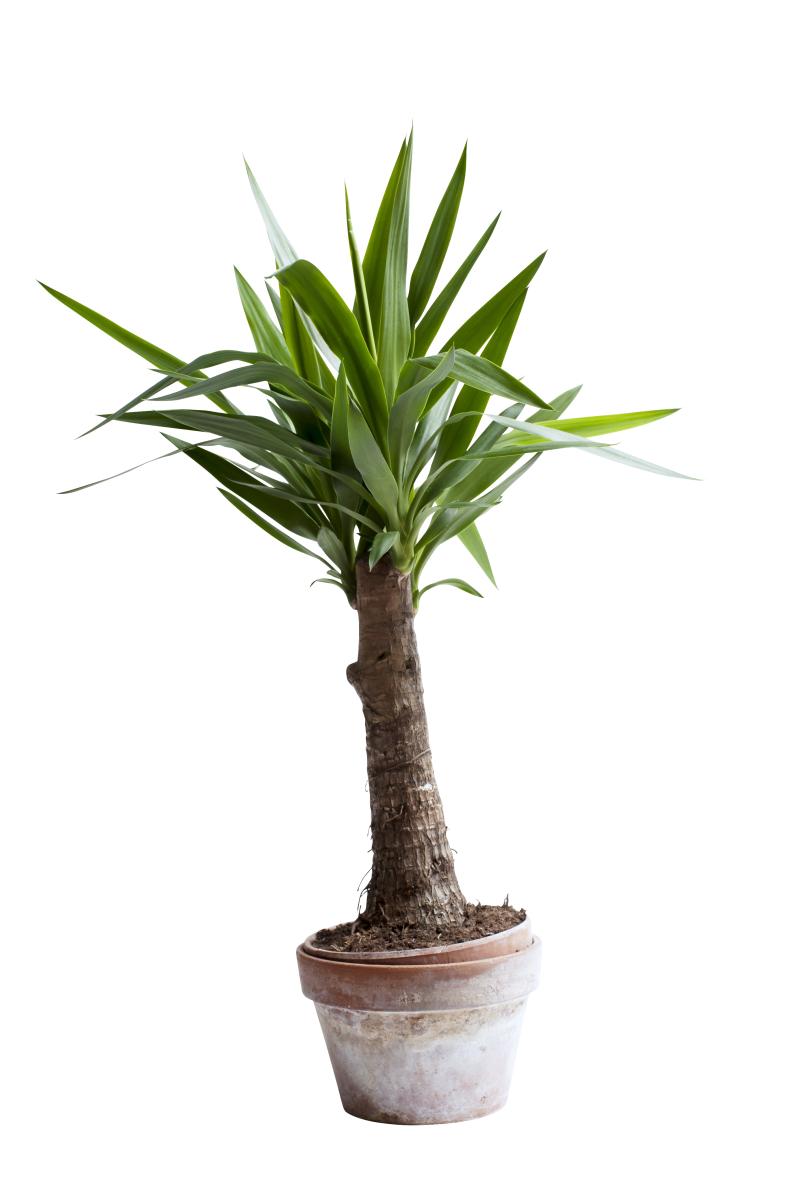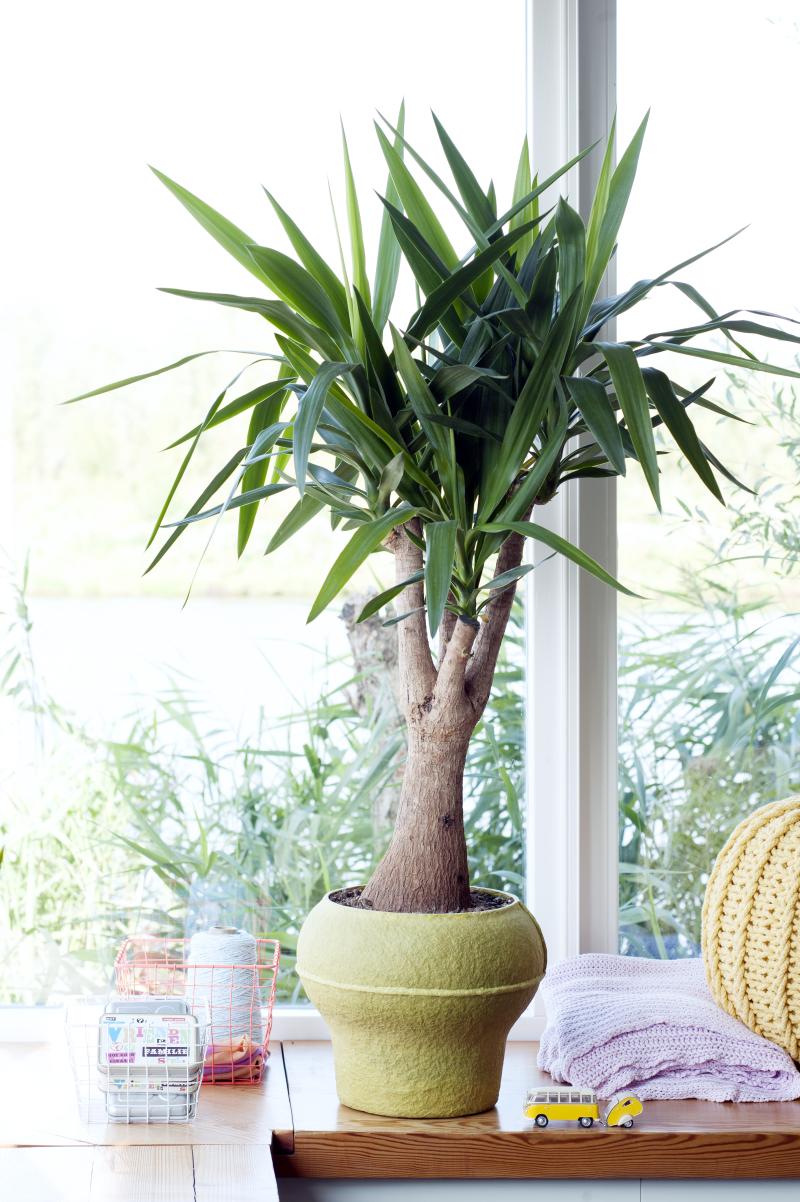January 2015: the Yucca is Houseplant of the month
We are kicking off 2015 with the Yucca as the Houseplant for the month of January. Each month we choose a Houseplant of the month and place this in the spotlight. Will you join in on your shop floor? It’s really easy with our free to download POS material, which you can find underneath in the link
The story of the Yucca
The Yucca comes from the Agaveaceae family, which includes houseplants such as Dracena, Beaucarnea and Cordyline. In the wild it is found in warm and dry areas in North and South America and the Caribbean. The plants often have thick, leathery leaves with a sharp point and white flowers. These leaves grow straight out of the soil or on one or more stems.
Yucca production
The stems for the Yucca are imported from South America. The plants grow there on coffee plantations where they create shade for the coffee plants. Yuccas grow approximately 30 centimetres per year and are pruned after a number of years. The pruned wood is exported to Europe where it is potted and once the leaf rosettes have formed, the Yucca can be sold as a houseplant.
What do you need to look out for when buying a Yucca?
• Size. Check the pot size in relation to the number of heads per stem or stems per pot, the shape of the stem, the height/length of the plant and the age of the plant.
• Shapes and sizes. The Yucca comes in many different shapes and sizes: single stem, spineless, cluster (multiple plants of one variety in a pot), branched (two or more side shoots off the main stem), with ground cover, stump or mummies.
• Roots. It is especially important to check the root system of stem products such as the Yucca.
• Leaf points. There should be no leaf points (damage through knocks) larger than 5mm.
• Health. The plant should be healthy, so free of pests and diseases. Look out for scale insects and banana moths or other moths in the stems.
• Top of the stem. The top of the stem should be closed off with wax to prevent rotting through dampness or watering.
Yucca range
There is a limited range of Yuccas. The most popular variety is the green leaved Yucca elephantipes, named after an elephant foot, which the Yucca really resembles in its natural habitat. As well as the elephantipes, Y. aloifolia and Y. rostrate are also regularly available. The Y. flaccida is a garden variety. There are also varieties available with light coloured edges, such as the Yucca elephantipes ‘Jewel’.
Care tips for consumers
The Yucca likes to be in a light position and needs regular watering, but not too much as that can lead to stem rotting. The thicker and larger the stem, the easier the plant will be. The Yucca can be outside in a sunny position from May to October. Let the plant get used to the sun, to avoid burning. Move the plant to a cool position during the rest period in winter and give it less water.
Your customer can remove the yellow or wilted leaves, or can prune the Yucca, best carried out in the darker months. The plant can flower, especially when it has been a little ‘neglected’.
Creative tips for the Yucca
Because of its strong shape and easy care the Yucca is an ideal student plant (or an ‘I-don’t-have-green-fingers plant), preferably in a sturdy, stone pot. You could also display it like this. To make the plant trendy you could paint the stem and the leaf rosette in a range of colours, with natural paint.
Our Yucca film
For consumers, we have created an online video with the Yucca in the lead role. You are more than welcome to embed this video [ http://youtu.be/h4eqs4D0eqw ]on your own website, social media channels and even play it in your shop. You can watch the film below now.
You can download the images below and the poster (see link) for free.
Images of Yucca
You can download and use the images below free of charge if you credit Thejoyofplants.co.uk.
Instagram: @thejoyofplants
Facebook: @thejoyofplants
Twitter: @thejoyofplants
Poster: 01_2015_poster_yucca.uk_.pdf



